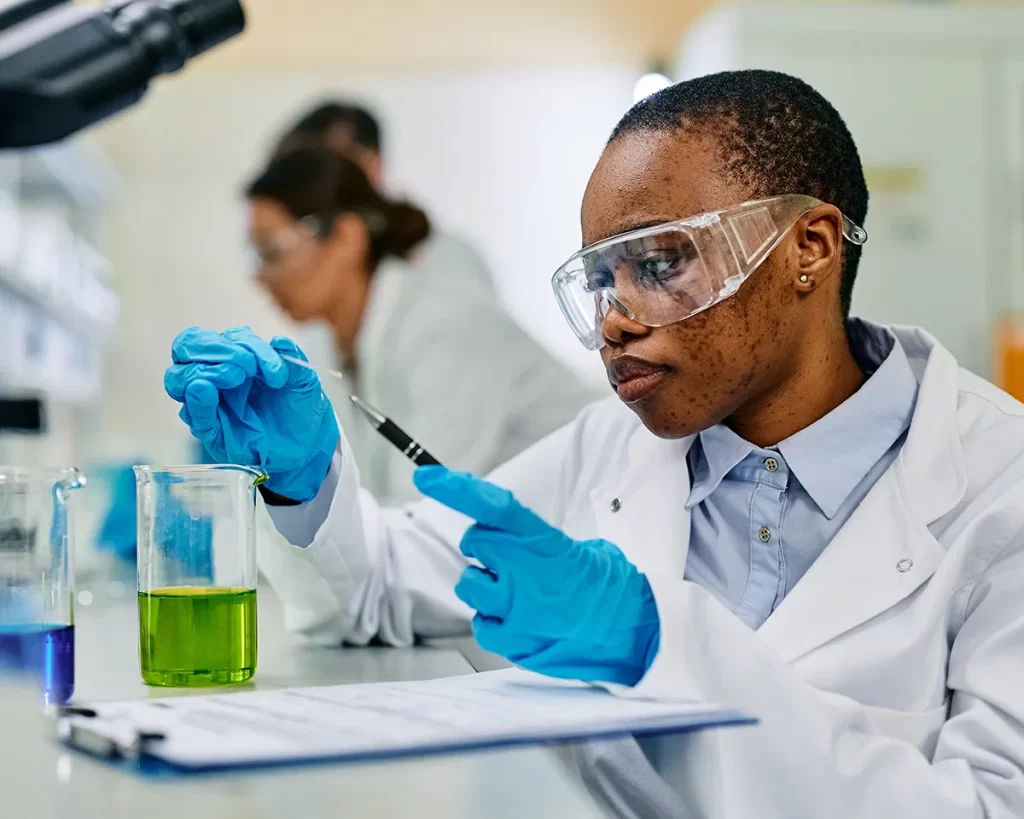
Introduction
Ever wondered how scientists count atoms—something so tiny you can’t even see them with a microscope?
Well, they don’t actually count them one by one.
Instead, they use a powerful concept called the mole, a tool that bridges the gap between the microscopic world of atoms and the macroscopic world we interact with.
In this article, you’ll learn exactly how to determine the number of atoms in a given amount of a substance; specifically, in this case, neon gas.
And trust me, once you understand this, you’ll start seeing chemistry as a game of ratios and relationships rather than endless memorization.
Problem Statement
Question:
How many atoms of neon (Ne) are there in 0.55 moles of Ne?
To solve this, you don’t need to panic or guess. Instead, we’re simply converting moles into atoms using a constant that governs all mole-atom conversions in chemistry..
Let’s walk through this using a step-by-step approach that makes the logic easy to follow.
Step 1: Understand the Mole-Atom Relationship
In chemistry, 1 mole of any substance contains exactly 6.022 × 10²³ particles—this is known as Avogadro’s number.
Whether the particles are atoms, molecules, or ions doesn’t matter. The mole represents a count, like a dozen represents 12.
So if:
- 1 mole = 6.022 × 10²³ atoms
Then:
- 0.55 moles = ? atoms
You just multiply the number of moles by Avogadro’s number.
Step 2: Apply the Formula
The formula to use here is:
Number of atoms = Moles × Avogadro’s number
Let’s plug in the numbers:
Number of atoms = 0.55 × 6.022 × 10²³
Using a calculator:
Number of atoms = 3.3121 × 10²³ atoms
You can round this off to:
Final Answer: 3.31 × 10²³ atoms of Ne
And just like that, you’ve determined how many atoms are in a sample of neon gas by using one simple multiplication.
Step 3: Why This Works
Think of the mole as chemistry’s version of a “batch counter.”
You don’t count each individual grain of sugar when you bake—you measure cups or grams. Likewise, chemists don’t count each atom—they use moles.
Indeed, the beauty of this concept is that it lets us convert between the unseen atomic world and lab-scale measurements.
Knowing how many atoms are in a sample helps chemists:
- Predict how much energy a reaction might release
- Determine how much of another substance is needed for a reaction
- Balance equations accurately
- Compare elemental compositions
Step 4: Real-Life Applications of Atom Counting
This isn’t just an academic exercise. Here’s where this skill shows up in the real world:
1. Semiconductor Manufacturing
When engineers dope silicon with specific numbers of neon atoms to tweak electrical properties, mole-to-atom conversions guide the exact quantities needed.
2. Gas Lasers
Neon is used in lasers and signage. Consequently, to optimize performance and color accuracy, manufacturers must precisely calculate the number of neon atoms per mole of gas.
3. Nuclear Chemistry
Counting atoms isn’t just about routine chemistry. In nuclear reactions, scientists use mole-based calculations to predict radioactive decay rates and track isotopic compositions.
Step 5: Common Mistakes to Avoid
When students miss this kind of question, it usually comes down to a few simple errors:
- Using the wrong unit: Don’t confuse grams with moles. This question starts in moles—you don’t need the molar mass of neon at all.
- Forgetting Avogadro’s number: Always remember, 1 mole = 6.022 × 10²³ atoms.
- Wrong exponent math: Double-check your multiplication when working with scientific notation. A small error can give you a wildly inaccurate answer.
- Skipping units: Always write out the units. This helps you catch mistakes before they mess up your final answer.
Step 6: Bonus — Let’s Flip It Around
Let’s say the question was flipped:
How many moles of neon are there in 6.022 × 10²³ atoms?
That’s a simple reversal.
Use this formula:
Moles = Number of atoms ÷ Avogadro’s number
So:
Moles = (6.022 × 10²³) ÷ (6.022 × 10²³) = 1 mole
Becoming comfortable with both directions of this conversion, therefore, builds your confidence for a variety of chemistry problems.
Step 7: Test Yourself
Try this quick one:
How many atoms are in 1.2 moles of helium?
(Hint: Use the same method. No molar mass needed.)
Real-World Perspective — Why This Is More Than Just Numbers
Every drug, every engine, every fertilizer, and every satellite runs on reactions. And reactions are built on particles.
If you can’t calculate how many atoms you’re starting with, how can you predict what you’ll end up with?
Whether you’re working in a lab, designing a product, or just trying to pass your chemistry exam, this conversion is foundational.
Ultimately, you’re not just solving for numbers. You’re learning how the invisible world works—and how to control it.
Final Wrap-Up
Let’s recap.
The compound C₄H₄S₂ contains 4 hydrogen atoms per molecule.
So when you’re given 50 molecules, all you need to do is multiply:
4 × 50 = 200 hydrogen atoms
This kind of question teaches you how to break big problems into manageable parts, focus on what’s relevant, and ignore distractions.
It’s one of the simplest forms of stoichiometry—but also one of the most important to get right early on.
Want to Feel 100% Ready for Your Chemistry Tests?
Head over to copychemistry and take your understanding to the next level.
Our guided lessons don’t just give you answers—they also help you build intuition. Additionally, you’ll find structured worksheets, expert video breakdowns, and step-by-step problem sets tailored to real exam questions..
Need help with topics like moles, atoms, conversions, or reaction predictions? We’ve got you covered.
Chemistry doesn’t have to be confusing or boring.
When it’s taught right, it just makes sense.
